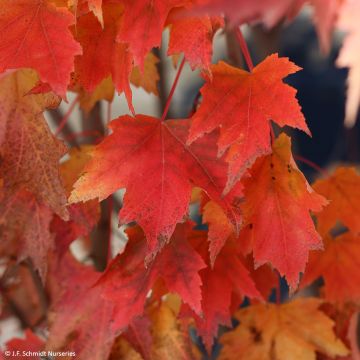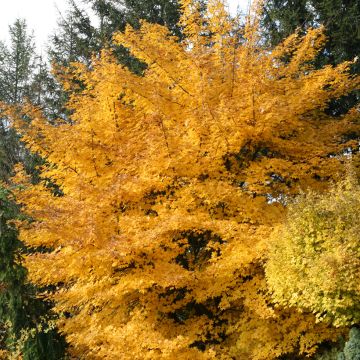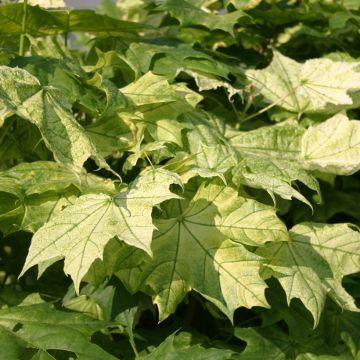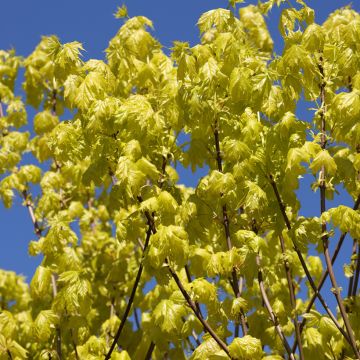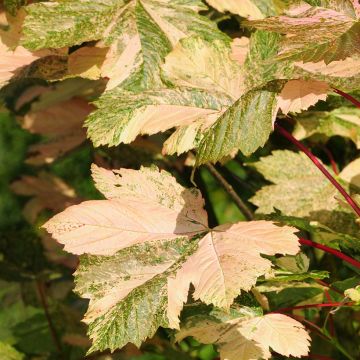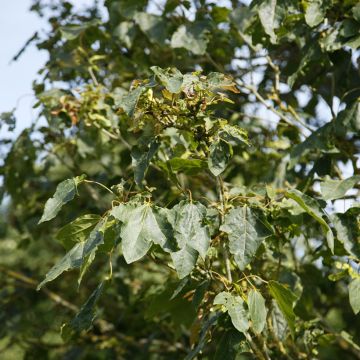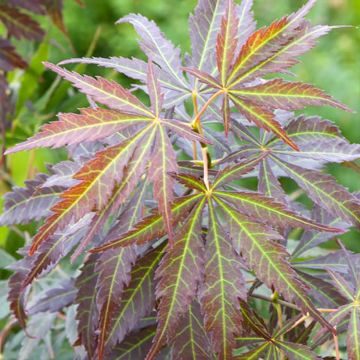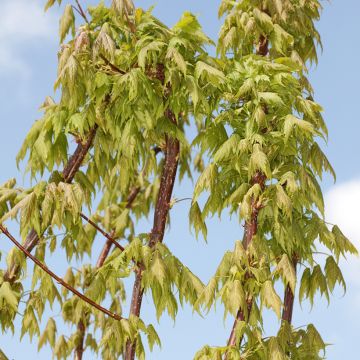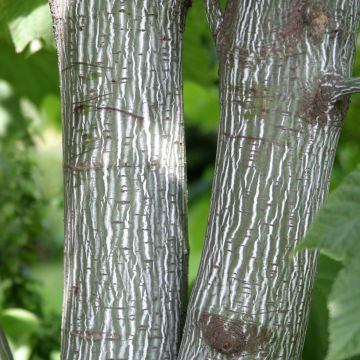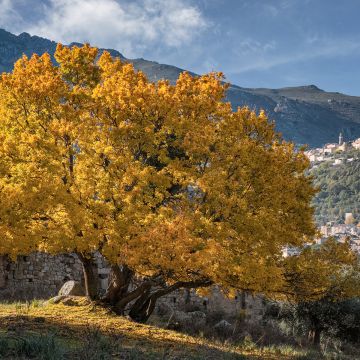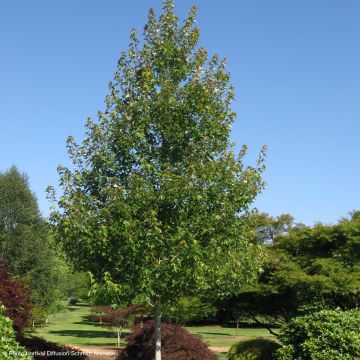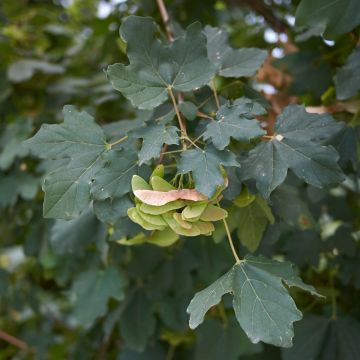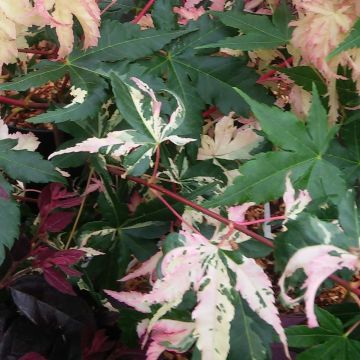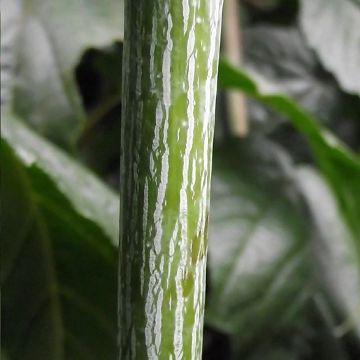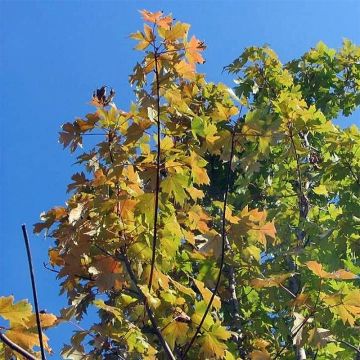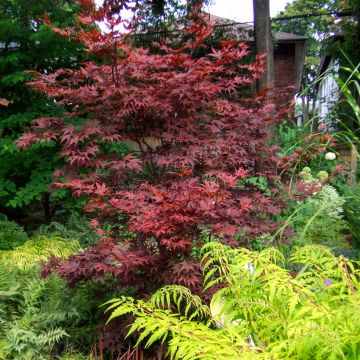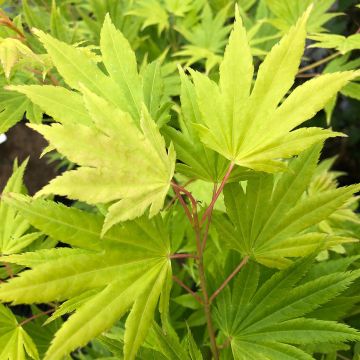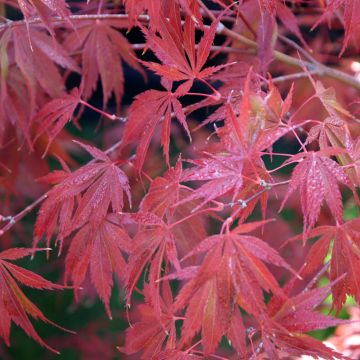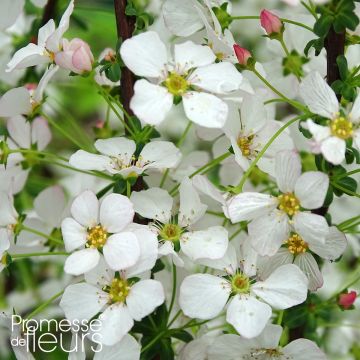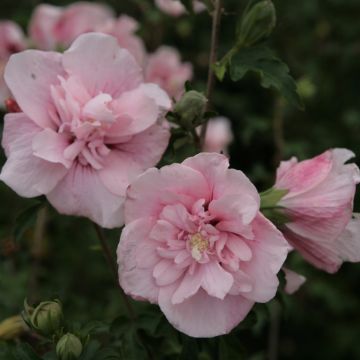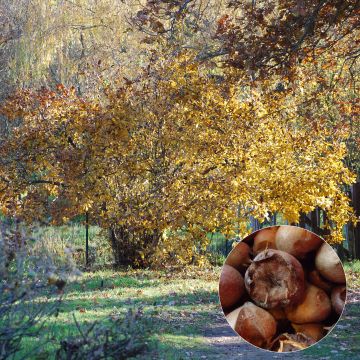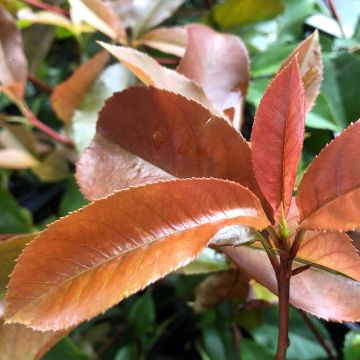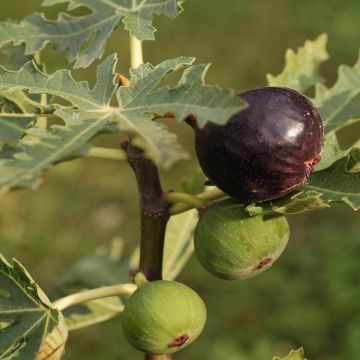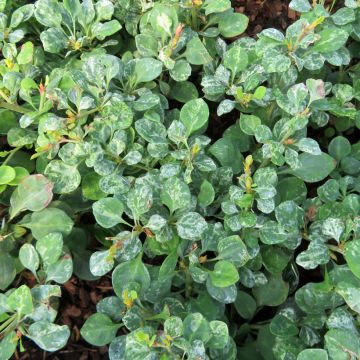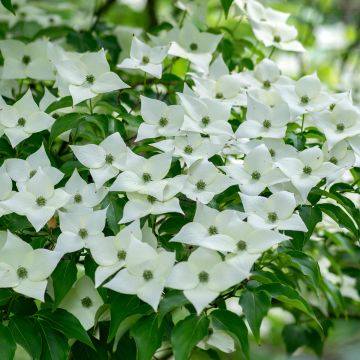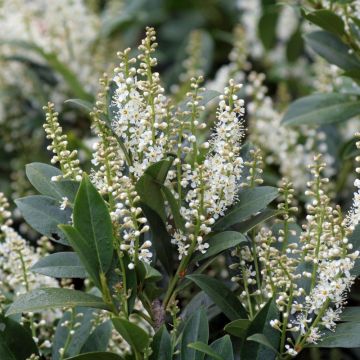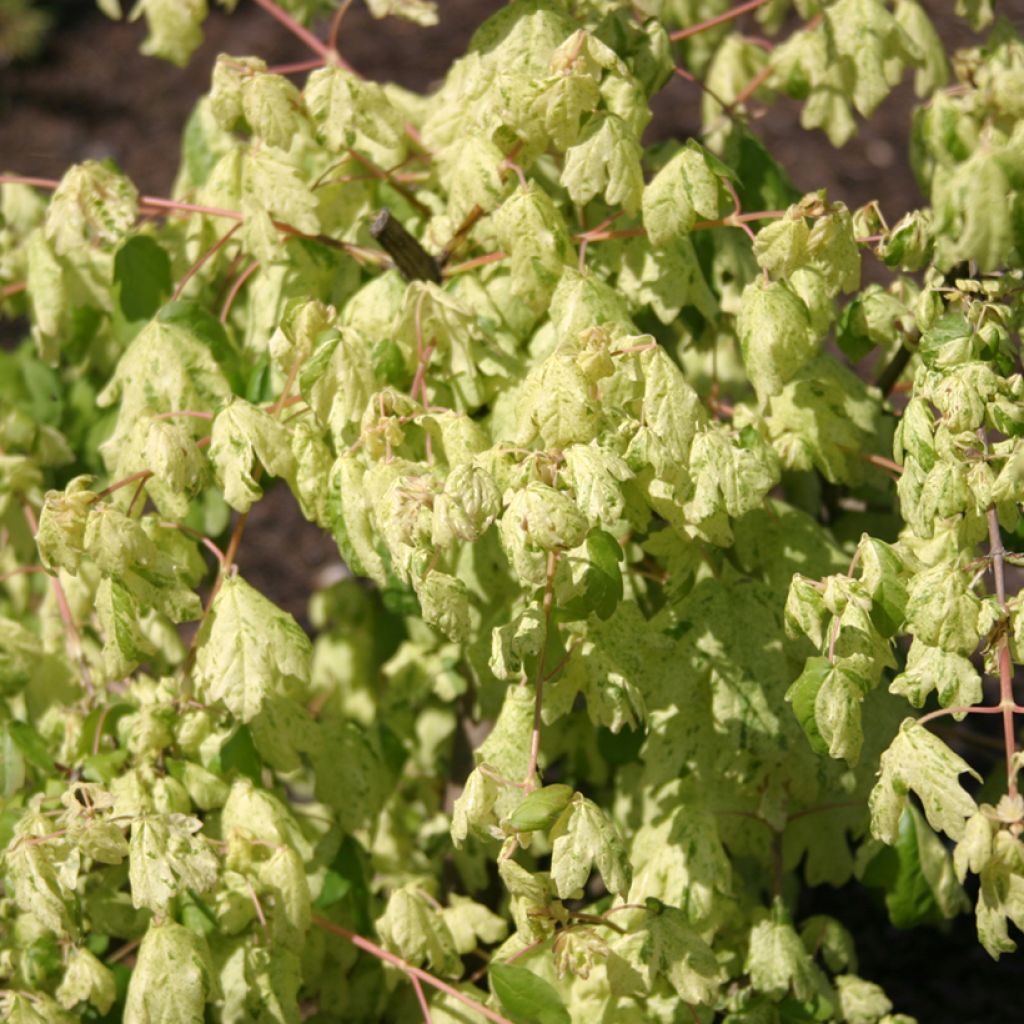

Acer campestre Pulverulentum - Field Maple
Acer campestre Pulverulentum - Field Maple
Acer campestre Pulverulentum
Field Maple, Common Maple
Why not try an alternative variety in stock?
View all →This plant carries a 24 months recovery warranty
More information
We guarantee the quality of our plants for a full growing cycle, and will replace at our expense any plant that fails to recover under normal climatic and planting conditions.
Does this plant fit my garden?
Set up your Plantfit profile →
Description
Acer campestre 'Pulverulentum' is a cultivar of field maple whose leaves appear to be sprinkled with white to cream-yellow in spring. It forms more of a shrub than a tree, due to its not very tall, bushy growth. It is noticeable again in autumn, when its foliage turns orange-yellow. In the garden, it is an accommodating plant that adds a touch of charm to an informal hedge.
Acer campestre 'Pulverulentum' was obtained in Germany around 1859. It is a dwarf and variegated form of the field maple, a forest tree native to Europe, Asia Minor, and North Africa. This 'Pulverulentum' variety develops multiple trunks and a bushy branching structure. It is slow-growing and will reach a height of 2.5m with a width of about 2m if not pruned. The deciduous foliage of this maple is composed of smaller leaves than those of the species, showing 3 to 5 lobes. When they appear in spring, their colour is an intensely speckled or spotted green with cream-white to pale yellow. In summer, they become greener, while the young leaves are variegated. Autumn and the first cold weather colours the foliage in varying shades of golden yellow to coppery or orange. The very discreet flowering takes place in spring, at the same time as the leaves emerge. The small flowers are greenish and grouped in corymbs. Winged, often reddish fruits, called samaras then form. The wings of this fruit are opposite and perfectly aligned. The field maple forms the hardest wood that can be found in this genus. Its bark is pale grey and fissured. The branches of young plants frequently show a corky, ribbed, insulating, and channelled bark, used for making perches for poultry, which has earned it the popular name "chicken wood".
Field Maple 'Pulverulentum' is a large accommodating shrub, it grows in any ordinary soil, even chalky and fairly dry, as long as it is deep enough. Avoid excessively hot exposures to protect its variegated foliage. It will be enhanced by shrubs with dark foliage, such as purple-leaved weigela, for example. A bed of 'Rozanne' geraniums with long-lasting blue flowers will form an elegant combination with its variegated foliage. In a country hedge, it can be mixed with autumn-coloured spindle trees, Japanese quinces, and white-flowering spireas.
Report an error about the product description
Plant habit
Flowering
Foliage
Botanical data
Acer
campestre
Pulverulentum
Sapindaceae
Field Maple, Common Maple
Acer campestre 'Dusty', 'Punctatum', 'Variegata'
Cultivar or hybrid
Other Acer - Maple tree
View all →Planting and care
Acer campestre 'Pulverulentum' should be planted in spring or autumn in all deep soils, preferably with a tendency towards limestone, in a sunny (not scorching) or preferably semi-shaded location. Once well established, it does not require watering in summer and requires no maintenance. Beware of strong winds. This maple tends to produce shoots that revert to type (entirely green juvenile leaves), which should be removed. Keep the soil moist during the first two summers after planting. Mulching can be beneficial to maintain good soil moisture.
Planting period
Intended location
Care
This item has not been reviewed yet - be the first to leave a review about it.
Similar products
Haven't found what you were looking for?
Hardiness is the lowest winter temperature a plant can endure without suffering serious damage or even dying. However, hardiness is affected by location (a sheltered area, such as a patio), protection (winter cover) and soil type (hardiness is improved by well-drained soil).

Photo Sharing Terms & Conditions
In order to encourage gardeners to interact and share their experiences, Promesse de fleurs offers various media enabling content to be uploaded onto its Site - in particular via the ‘Photo sharing’ module.
The User agrees to refrain from:
- Posting any content that is illegal, prejudicial, insulting, racist, inciteful to hatred, revisionist, contrary to public decency, that infringes on privacy or on the privacy rights of third parties, in particular the publicity rights of persons and goods, intellectual property rights, or the right to privacy.
- Submitting content on behalf of a third party;
- Impersonate the identity of a third party and/or publish any personal information about a third party;
In general, the User undertakes to refrain from any unethical behaviour.
All Content (in particular text, comments, files, images, photos, videos, creative works, etc.), which may be subject to property or intellectual property rights, image or other private rights, shall remain the property of the User, subject to the limited rights granted by the terms of the licence granted by Promesse de fleurs as stated below. Users are at liberty to publish or not to publish such Content on the Site, notably via the ‘Photo Sharing’ facility, and accept that this Content shall be made public and freely accessible, notably on the Internet.
Users further acknowledge, undertake to have ,and guarantee that they hold all necessary rights and permissions to publish such material on the Site, in particular with regard to the legislation in force pertaining to any privacy, property, intellectual property, image, or contractual rights, or rights of any other nature. By publishing such Content on the Site, Users acknowledge accepting full liability as publishers of the Content within the meaning of the law, and grant Promesse de fleurs, free of charge, an inclusive, worldwide licence for the said Content for the entire duration of its publication, including all reproduction, representation, up/downloading, displaying, performing, transmission, and storage rights.
Users also grant permission for their name to be linked to the Content and accept that this link may not always be made available.
By engaging in posting material, Users consent to their Content becoming automatically accessible on the Internet, in particular on other sites and/or blogs and/or web pages of the Promesse de fleurs site, including in particular social pages and the Promesse de fleurs catalogue.
Users may secure the removal of entrusted content free of charge by issuing a simple request via our contact form.
The flowering period indicated on our website applies to countries and regions located in USDA zone 8 (France, the United Kingdom, Ireland, the Netherlands, etc.)
It will vary according to where you live:
- In zones 9 to 10 (Italy, Spain, Greece, etc.), flowering will occur about 2 to 4 weeks earlier.
- In zones 6 to 7 (Germany, Poland, Slovenia, and lower mountainous regions), flowering will be delayed by 2 to 3 weeks.
- In zone 5 (Central Europe, Scandinavia), blooming will be delayed by 3 to 5 weeks.
In temperate climates, pruning of spring-flowering shrubs (forsythia, spireas, etc.) should be done just after flowering.
Pruning of summer-flowering shrubs (Indian Lilac, Perovskia, etc.) can be done in winter or spring.
In cold regions as well as with frost-sensitive plants, avoid pruning too early when severe frosts may still occur.
The planting period indicated on our website applies to countries and regions located in USDA zone 8 (France, United Kingdom, Ireland, Netherlands).
It will vary according to where you live:
- In Mediterranean zones (Marseille, Madrid, Milan, etc.), autumn and winter are the best planting periods.
- In continental zones (Strasbourg, Munich, Vienna, etc.), delay planting by 2 to 3 weeks in spring and bring it forward by 2 to 4 weeks in autumn.
- In mountainous regions (the Alps, Pyrenees, Carpathians, etc.), it is best to plant in late spring (May-June) or late summer (August-September).
The harvesting period indicated on our website applies to countries and regions in USDA zone 8 (France, England, Ireland, the Netherlands).
In colder areas (Scandinavia, Poland, Austria...) fruit and vegetable harvests are likely to be delayed by 3-4 weeks.
In warmer areas (Italy, Spain, Greece, etc.), harvesting will probably take place earlier, depending on weather conditions.
The sowing periods indicated on our website apply to countries and regions within USDA Zone 8 (France, UK, Ireland, Netherlands).
In colder areas (Scandinavia, Poland, Austria...), delay any outdoor sowing by 3-4 weeks, or sow under glass.
In warmer climes (Italy, Spain, Greece, etc.), bring outdoor sowing forward by a few weeks.



































